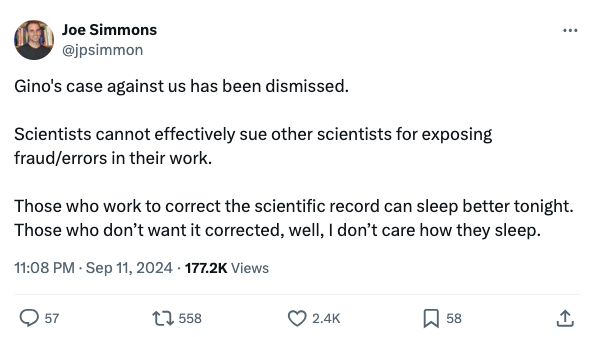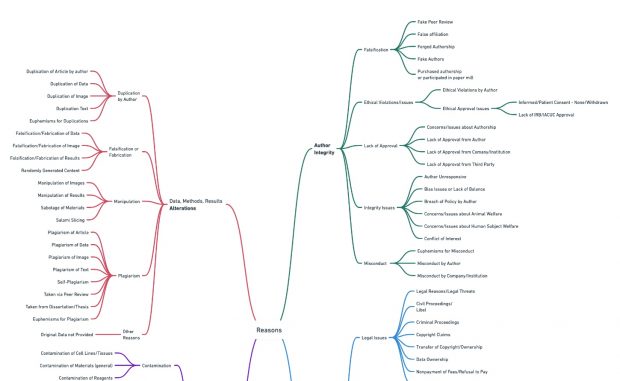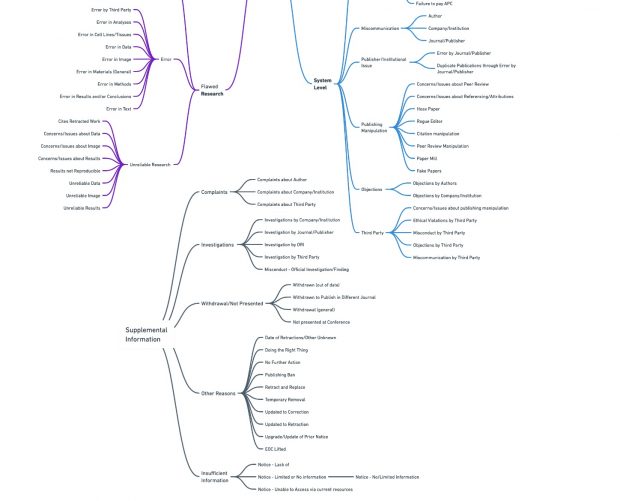see my recent entry but also Science yesterday

see my recent entry but also Science yesterday

durchgesehenes MacWhisper Transkript der Sitzung
Bundesbildungsministerin Bettina Stark-Watzinger (FDP) hat heute morgen am Dienstag, 10. September 2024, im Ausschuss für Bildung, Forschung und Technikfolgenabschätzung gegen die in der sogenannten Fördergeld-Affäre erhobene Vorwürfe weiterhin zurückgewiesen. Der Bildungsausschuss des Bundestages war am Dienstagmorgen zu einer von der Unionsfraktion beantragten Sondersitzung zusammengekommen, um erneut über das Thema zu beraten. Einziger Tagesordnungspunkt war das „Gespräch mit der Bundesbildungsministerin Bettina Stark-Watzinger zu hausinternen Prüfaufträgen zu Fördermittelstreichungen infolge eines Offenen Briefs“.
Interessant sind dabei die immer wieder neuen Details zu den Wire Protokollen und der “F Gruppe” in der angeblich nur Ministeriumsmitglieder waren, der Inhalt aber “privater” Natur war und daher nicht in die Akten kam. Highlights in der zweiten Fragerunde: T. Jarzombek und S. Albani in der dritten. Dazu ein wie immer ein treffsicherer Kommentar von J-M. Wiarda
Klar ist aber auch abgesehen von der “Wire”-Frage, die “FragDenStaat” gerade gerichtlich klären lässt: Der Ausschuss hat keine Einsicht in die vollständigen Originalakten des Ministeriums und kann daher nicht überprüfen, ob ihm wirklich alles Relevante zur Verfügung gestellt worden ist.
Eine gute Idee war es auch von Diening und Olbrisch die Mimik der Zuschauerin Döring zu beobachten – der berühmte eisige Blick kommt bei 6:28….
Stark-Watzinger unten im Ausschuss: »Wir nehmen es mit der Aufklärung ernst.« Döring oben auf der Tribüne: gelingt gerade noch so ein Pokerface.
…
»Es war ein Missverständnis.« Döring oben: ein Zucken im Gesicht. Kopfschütteln.
Online

Aufklärung mit Maulkorb
Mehr Fragezeichen als Antworten
„Soldateska“ und „schwarzer Block“
Stark Watzinger hält Affäre für aufgeklärt
Chatverläufe um Fördergeldaffäre werfen Fragen auf
Es kann nur noch eine Antwort geben
Dieser Skandal wird nicht veraktet beantwortet die Frage warum sie noch im Amt ist. Weil Wissenschaft immer weniger Achtung geniesst?
…Weil: Wir-haben-halt-so-viele-andere-Probleme.
Rational betrachtet ist die Fördergeldaffäre einfach nicht wichtig genug, um es an den Kabinettstisch der fragilen Ampelregierung zu schaffen. Ganz zu schweigen von einem Personalwechsel (den FDP-Chef Christian Lindner wollen müsste, aber wieso sollte er?). Diese Bundesregierung hat sich entschlossen, die Wissenschaftsministerin samt ihrer erodierenden Forschungspolitik bis zum Ende der Legislatur durchzuschleppen. Mag der Etat dieses Ministeriums auch hoch sein: Politisch und diskursiv sind diese Themen von geringem Gewicht.
Source of this new taxonomy is Figshare while being modified by Retraction Dashboard, It is a big update of my 2006 diagram that was itself based on a Lancet paper. 

Tilman Moser (1938-2024) schreibt in “Gottesvergiftung” seine (An-)klage gegen Gott in der langen Tradition der Psalmen, des Klageliedes, von Hiob bis zur Anklage Jesu am Kreuz
Mit der psychischen Grundfigur der Erwählung, des auserwählten Volkes, hast du dir ja schon ganz zu Anfang einen kleinen Teil der Menschheit eingefangen, einen Brückenkopf aus dem Nichts gebildet.
Weißt du, wie listig du mit den narzißtischen Bedürfnissen deiner Anhänger umgehst, wie fein dosiert du die Grade der Erwählung und der Gottesnähe verteilen kannst, wie virtuos du die Angebote von Geborgenheit, Führung, Glanz und Einzigartigkeit mischst – von den Strafangeboten einmal abgesehen -, so daß sich jeder nach seinen ureigensten, geheimsten niemals öffentlich eingestandenen Bedürfnissen bedienen kann?
Du bist raffiniert und wirst dadurch mächtig, daß du die Angebote an alle anderen im Dunkeln läßt und im Grunde dich jeder so ganz im stillen verehrt und verzehrt.
Das grundlegende Problem ist nicht, ob ein Volk, ein Stamm oder eine Gruppe von Gott erwählt wurde, sondern ob es sich als erwählt versteht. Damit wird der Glaube an die Überwertigkeit zur Realität, ganz ohne Erwählung, was auch als Thomas Theorem bekannt ist
If men define situations as real, they are real in their consequences / Wenn die Menschen Situationen als wirklich definieren, sind diese in ihren Konsequenzen wirklich (W. I. Thomas und D. S. Thomas)
So erfüllen sich ganz von selbst alle Prophezeiungen. Und die Konsequenz? Einfach nur furchtbar was die täglichen Nachrichten seit dem 7. Oktober bringen, eine Gewaltspirale zwischen zwei Völkern die kein Ende nimmt. Denn nicht nur die Juden Jes 42,1-4
Siehe, das ist mein Knecht, den ich halte, und mein Auserwählter, an dem meine Seele Wohlgefallen hat. Ich habe ihm meinen Geist gegeben; er wird das Recht unter die Heiden bringen.
sondern auch die Palästinenser fühlen sich auserwählt Sure 3,34
Allah hat Adam, Noah, die Familie Abrahams und die Familie Amrans vor allen anderen Menschen auserwählt.
Das mag alles etwas verkürzt sein, aber warum nicht wenn es den Kern trifft. Religion als Opium fürs Volk? Nein, nicht Opium sondern Crystal Meth.
Wir brauchen offensichtlich auch so ein “Kill Switch” Gesetz wie in Kalifornien das einen Notausschalter vorschreibt , wenn die Filter nicht mehr mitkommen undunethische Entscheidungen getroffen werden.
As we’ve previously explored in depth, SB-1047 asks AI model creators to implement a “kill switch” that can be activated if that model starts introducing “novel threats to public safety and security,” especially if it’s acting “with limited human oversight, intervention, or supervision.”
Nur – wann wird der Kill Switch aktiviert? Bilder wie die von Elon Musk’s X-Grok könnten wahlentscheidend sein.
Oh my god. Grok has absolutely no filters for its image generation. This is one of the most reckless and irresponsible AI implementations I’ve ever seen. pic.twitter.com/oiyRhW5jpF — Alejandra Caraballo (@Esqueer_) August 14, 2024
Science was based on mutual trust a few decades years ago but with the development into a large money making and career system we cannot believe any more in published results. This affects basically all disciplines not only those that notoriously known for bad quality.
It affects now even thousands of papers that report wrong microscope manufactures as possible sign of misconduct as reported now by Retractionwatch.
One in four papers on research involving scanning electron microscopy (SEM) misidentifies the specific instrument that was used, raising suspicions of misconduct, according to a new study. The work, published August 27 as a preprint on the Open Science Framework , examined SEM images in more than 1 million studies published by 50 materials science and engineering journals since 2010.
So I see only one possibility: Mutual trust needs to be replaced with more vigorous control of the the research community and not just two dozen sleuths and journalists. Research integrity should become an own recognized scientific discipline with full-term departments, funding, teaching and established methods & software tools.
Please go to www.vox.com
You probably haven’t heard of cardiologist Don Poldermans, but experts who study scientific misconduct believe that thousands of people may be dead because of him.
After changing the battery it needs to be calibrated

So the question was how to drain it most effectively? Maybe playing video would work but running this short line in the terminal as may times as there are CPUs was much more efficient
yes > /dev/null &
It seems that the initial high loading is most important
Researchers at SLAC-Stanford Battery Center report in a study published today in Joule that giving batteries their first charge “at unusually high currents increased their average lifespan by 50% while decreasing the initial charging time from 10 hours to just 20 minutes.”
The Guardian writes that humans age dramatically increases in two bursts at 44, then 60 years. The headline may be misleading as it misses the growth spurt in 10 year old children but also the cachexia of people around 90.
The report relies on a report with limited observation period
In this study, we performed comprehensive multi-omics profiling on a longitudinal human cohort of 108 participants, aged between 25 years and 75 years. The participants resided in California, United States, and were tracked for a median period of 1.7 years, with a maximum follow-up duration of 6.8 years.
but nevertheless it confirms my own observation with age effects in bursts around 45 and again in 60 (even did some studies on chronobiology and DNA ageing that confirmed ELOVL2 effects in 2015 while a confirmation study 2020 could not be finished due to COVID19).
It is a bit annoying, however, as there are always different numbers in the Snyder study when compared to earlier reports of the same group that missed the current findings.
Even worse as there was no a priori study plan the results look more like a display of a random data warehouse where you can pick what you waant. So where is the main effect and what is the driving force? The authors are counting significant changes

If we look at the proportional max/min change it is roughly 40% at transcriptomics and proteomics and 32% at metabolomics level. But I have no clue what’s behind these peaks – GTPase activity? Oxygen carrier? As there are no methylation data, no tissue biospy, not even any blood sample covering the whole time span, it remains a rather fuzzy paper that tries to provide a scientific basis of a common sense observation.
A recent stackexcange response confirms this
Apple Mail can make its Core Spotlight index available to other apps which include an app specific Mail Plugin. This is controlled (from the Apple Mail perspective) in the general preferences under Manage Plug-ins.
Unfortunately however the Houdah plugin stopped now working. So the only working solution seems InfoClick that can build its own index but takes 17 hours for 340.00 emails… 
Here are some impressions from my visit last week -a reactor dome without cooling towers. and substation without function.
<irony>Thank you very much Franz Josef Strauss, Konrad Adenauer, & Max-Planck-Gesellschaft for all your efforts</irony>

Never forget, the press is the enemy. The establishment is the enemy; the professors are the enemy. Professors are the enemy. Write that on a blackboard 100 times and never forget it.
by R.Nixon and cited again by J.D.Vance in 2021
NCBI record https://clinicaltrials.gov/study/NCT02020174 doesn’t make so much sense to me